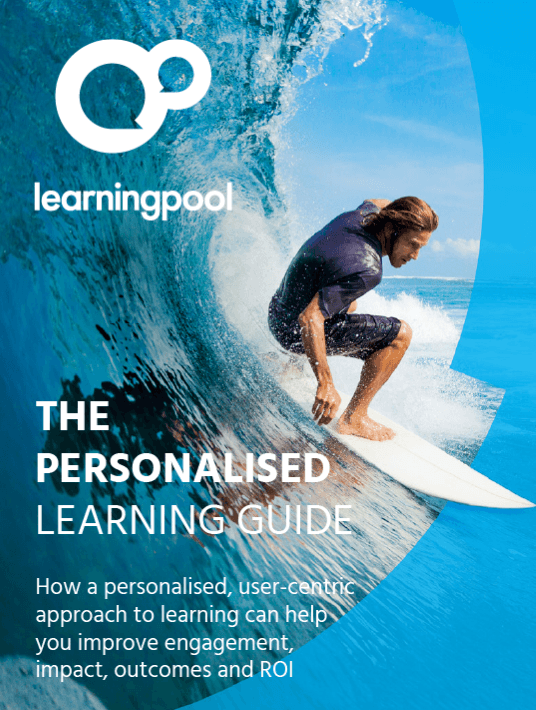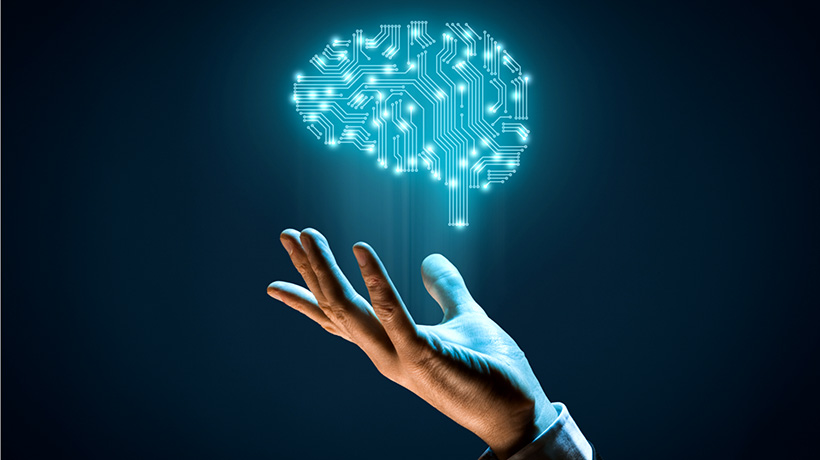Right Here, Right Now
The monster is here and living comfortably among us; in our cars, in our FaceBook timelines, in our daily workflow—and even in our homes.
We use AI-powered personal assistants to select the music we listen to, order takeaways and dim the lights. When we want to find something new to watch or buy we're influenced by AI-based recommender systems. We meet AI-driven chatbots in our interactions on social media and the Internet. We're seeing the impact of AI in the way we discover and access almost every type of information, in every aspect of our daily lives.

So, to repeat a question posed earlier in this eBook, why should learning be any different?
Why AI And Learning Make Natural Bedfellows
Artificial Intelligence has given us a new type of interaction between humans and machines that is distinctly different from what went before. And on a very fundamental level, this new type of interaction is something ideally suited to learning applications. Here's why.
AI virtual assistants, for instance, use natural-language processing. In other words, they 'understand' the way we talk (not literally, of course, but in the narrow sense that they can infer enough meaning from what we say to make a relevant response). There are various levels at which this communication functions, and some AI machines are more sophisticated and 'intelligent' than others, but the basic manner of our interaction is for us to pose a question and to expect and receive a response. When that happens, we're having a dialogue.
How AI Is Helping To Personalise Learning
When we talk about AI in learning we're actually talking about several different strands of development. And new applications for AI are emerging all the time. Below we look at some of the applications of AI that we are currently seeing deployed by learning departments.
Recommendations And Knowledge Curation
We've become very accustomed to looking to search engines and social media to find the answers we seek. But this ease of access to a wealth of information brings with it the danger of being deluged and unable to filter what's useful and relevant from what's just so much noise. 'It's not information overload' said Clay Shirky, 'but filter failure' that's our problem.
AI is playing a crucial role in helping to fix that problem for learners by providing a filter. In the learning context, it does this through recommendations and knowledge curation.
At the simplest level, a system can serve up recommendations for, say, related reading, or further learning, based on information the user gives it when they first log on; typically, via a drop-down list of topics, but increasingly through free text entry. Again, at the simplest level, the system could choose relevant content to deliver back based on tagging and metadata, but with the advent of AI, this is increasingly being done through 'reading' the content itself.
A further level of sophistication comes with the system's ability to watch our behavior, sense what we click on and view, and then to infer interests, predispositions, and goals from that. This is something we are all familiar with our lives as consumers. Often it gives us the creeps; as when we ask on one platform what the weather is like in Sweden, for instance, and then start getting ads for cheap flights to Stockholm on a different platform in a completely different medium. In the context of a learning system, however, this level of attentiveness can only be a good thing. Learning isn't trying to sell you anything!
Learnbots
AI virtual assistants in the form of chatbots are now common online. We see chatbots answering financial queries, providing customer support, diagnosing healthcare issues, and even offering counselling. They're now having an impact on general education and corporate learning, especially in the area of onboarding, where they serve as the first port of call for new hire training and allow new employees to learn as they work.
The Q&A format of interaction with a bot allows that training to reflect an employee's personal learning needs. It saves the organisation from the overhead and time-sink of running courses that not everyone needs and prevents training from becoming a one-off event that results only in information overload.
Learnbots can also operate within or as a front end to Learning Management Systems (LMS) or Learning Experience Platforms (LXP). The LXP has emerged as a content discovery layer within the corporate learning stack that is ideally suited to this type of interaction, and pairing of learnbots with LXPs is fast becoming standard practice. It is also becoming common for these bots to be integrated within the organisation's general communications platforms (e.g. Slack, Microsoft Teams). This ushers learning out of the wings and puts it centre-stage. No longer hidden away behind a door marked 'Training', it can become a consideration at the exact point where a skills gap or a knowledge need opens up, in the normal course of a working day.
Learnbots strengthen the personalisation of learning in providing learners with an intermediary agent that can respond in real-time to performance and development issues. And they make learning resources and experiences available and accessible within the workflow.
Analytics
Bots use the data they gather from user behaviour to provide an immediate response to the individual, but such data can also be harvested, aggregated with data from other learners across an organisation, and used for rich analytics.
Some organisations are beginning to bring together data from various parts of the organisation in 'data lakes' and subject it to analysis techniques that also use AI technology.
Techniques such as predictive analytics can, for example, pinpoint new areas of need, new opportunities for skills development and identify employees who are likely to 'churn'. LD is not yet advanced in this practice, but an exciting new world of possibilities is being opened up here.
In addition, LXPs come with the option of linking to a Learning Record Store (LRS). The LRS allows for detailed, data-driven tracking of and reporting on individual learners. It records not only their scores or completion of tasks but also uses xAPI to record a much wider range of learning behaviour including informal learning. The data accumulated is at a truly granular level which means the evaluation of learner satisfaction and learning impact moves beyond the collection of anonymous happy sheets and allows meaningful and effective intervention on an individual level based on real, demonstrable data.
Learning In Workflow
AI can help to reduce the gap between training and performance, between learning and working, by bringing learning into the workflow.
Improving The Learner Experience
In recent years an emphasis has grown up on improving the learner experience, as the problem of engagement has surfaced, and a model of administratively-focused training systems that treat learners as so many interchangeable units has begun to seem more and more antiquated in the face of societal and technological changes.
With its ability to offer rich personalisation at scale, AI is seen to be a powerful assistive technology in improving the learner experience. As a new generation of learning systems has emerged, known as learning experience platforms (or variations of that name) it has seemed natural enough, therefore, to find AI playing an important role in their technical architecture.
In the next section, we'll look closely at the LXP and how it can work to support a personalised learning strategy. Download the eBook The Personalised Learning Guide and discover how to frame a business case for personalized learning, and deploy appropriate technology to help implement it effectively. For more valuable insights on personalised learning, watch the webinar "Design A User-Centric Approach With A Learning Experience Platform (LXP)".


